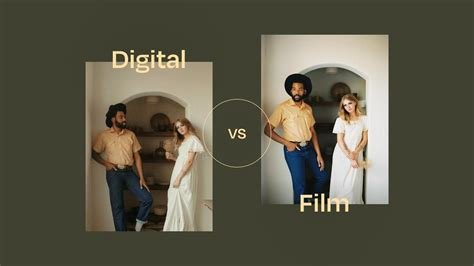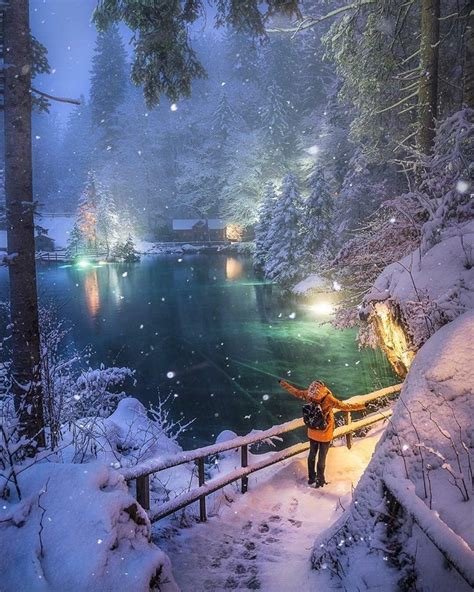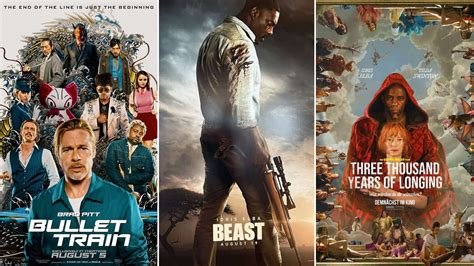How to Do Movie Photography for Film Lovers
Are you a film lover who is passionate about capturing the beauty and storytelling of movies through photography? If so, then this blog post is perfect for you. Movie photography, also known as cinematic photography, allows you to recreate the magic of the big screen in still images. In this comprehensive guide, we will explore the fundamental basics of movie photography, the essential equipment you need to get started, mastering lighting techniques to enhance your shots, capturing dynamic and compelling images, creating cinematic effects that evoke emotion, and the editing and post-processing techniques to bring your movie-inspired photographs to life. Whether you’re a beginner looking to delve into the world of movie photography or an experienced photographer seeking to elevate your skills, this blog post will provide you with the knowledge and tools to create stunning and captivating cinematic photographs. Let’s embark on this exciting journey into the art of movie photography together.
Understanding Movie Photography Basics
Movie photography, also known as cinematography, is the art and practice of capturing images on film or digital media for use in motion pictures. It is a crucial aspect of filmmaking, as it sets the visual tone and mood for the entire movie. Understanding the basics of movie photography is essential for anyone aspiring to work in the film industry as a director, cinematographer, or even as a film enthusiast.
One of the key elements of movie photography is composition. It involves arranging the visual elements within the frame to create a visually compelling image. This includes the use of the rule of thirds, leading lines, and framing to guide the viewer’s eye and create a sense of balance and harmony in the shot.
Another important aspect of movie photography is camera movement. This includes techniques such as panning, tilting, and tracking shots, which can add depth and dynamism to the visual storytelling. Understanding how to use these techniques effectively can greatly enhance the impact of the movie.
Lighting is also a fundamental aspect of movie photography. It involves the use of natural or artificial light sources to create mood, atmosphere, and visual interest in the scene. Mastering different lighting patterns and techniques is crucial for controlling the look and feel of the movie.
Essential Equipment for Movie Photography
When it comes to movie photography, having the right equipment can make all the difference in the quality of your shots. One of the essential pieces of equipment for movie photography is a high-quality camera. Look for a camera that offers manual control over settings like aperture, shutter speed, and ISO, as these factors are crucial for capturing professional-looking footage. A reliable tripod is also a must-have for movie photography, as it helps to stabilize your shots and prevent shaky footage.
Another essential piece of equipment for movie photography is a selection of lenses. Different lenses can offer various focal lengths, apertures, and perspectives, allowing you to capture a diverse range of shots. Investing in a high-quality microphone is also important for capturing clear audio in your movie footage, as built-in camera microphones often produce low-quality sound.
Lighting equipment is another essential aspect of movie photography. To create professional-looking footage, it’s crucial to have proper lighting gear, such as LED lights, softboxes, and reflectors. These tools can help you control the lighting in your scenes and create the desired mood and atmosphere.
Lastly, a reliable storage solution is crucial for movie photography. Invest in high-capacity memory cards and external hard drives to ensure that you have enough space to store your footage. Proper storage solutions also help to protect your valuable movie footage from loss or corruption.
Mastering Lighting Techniques for Movie Photography
When it comes to movie photography, mastering lighting techniques is crucial in order to achieve stunning shots and create the right mood for the film. Lighting plays a significant role in setting the tone and atmosphere of a scene, and is essential for capturing the desired emotion and storytelling.
One important lighting technique to master is the use of three-point lighting, which consists of a key light, fill light, and backlight. The key light is the main source of illumination, while the fill light helps to soften shadows and reduce contrast, and the backlight adds depth and separation from the background.
Another essential technique is understanding the use of natural light versus artificial light. Natural light can provide a soft and organic feel to the scene, while artificial light allows for more control and precision. Knowing when to use each type of light and how to manipulate them is essential for creating the desired visual impact.
Additionally, mastering the color temperature of light is important for achieving the right mood and atmosphere. Warm light can create a cozy and intimate feeling, while cool light can evoke a sense of mystery or tension. Understanding how different color temperatures affect the mood of a scene is key to mastering lighting techniques for movie photography.
Capturing Dynamic Shots in Movie Photography
When it comes to movie photography, capturing dynamic shots is crucial in creating visually engaging and exciting scenes. Dynamic shots are essential in adding movement, energy, and personality to a film, making it more compelling for the audience to watch. Whether it’s tracking shots, crane shots, or hand-held shots, the ability to capture dynamic shots requires both technical skill and artistic vision.
One essential technique for capturing dynamic shots in movie photography is the use of camera movement. By utilizing movement, whether it’s panning, tilting, or dolling, filmmakers can create a sense of motion and fluidity in their shots. This not only adds visual interest but also helps to guide the viewer’s attention to specific elements within the frame.
Another important aspect of capturing dynamic shots is composition. Framing and framing and positioning play a key role in creating impactful and visually striking images. Whether it’s utilizing the rule of thirds, leading lines, or symmetry, composing shots effectively can enhance the overall dynamism of a scene.
Moreover, timing and rhythm are crucial elements in capturing dynamic shots. Knowing when to start and stop a movement, as well as the pacing of a shot, can contribute to the overall energy and impact of the scene. Whether it’s a fast-paced action sequence or a subtle character moment, timing plays a significant role in capturing dynamic shots in movie photography.
Creating Cinematic Effects in Movie Photography
When it comes to movie photography, the goal is often to create stunning, cinematic effects that draw the audience into the story. One way to achieve this is through the use of special effects that elevate the visual impact of each frame. Whether it’s through the use of practical effects, digital effects, or a combination of both, the choices made in post-production can have a significant impact on the overall look and feel of the film.
Another key aspect of creating cinematic effects in movie photography is through the use of lighting. Lighting can be used to set the mood, create depth, and draw attention to specific elements within the frame. By mastering the use of natural light, artificial light, and various lighting techniques, a photographer can create a sense of drama and atmosphere that is essential to achieving a cinematic look.
In addition to special effects and lighting, the composition of each shot is crucial in creating cinematic effects. By carefully considering the placement of elements within the frame, the use of leading lines, and the incorporation of depth, a photographer can create a visual experience that feels immersive and dynamic. This attention to detail can make all the difference in creating a cinematic look that captivates the audience.
Finally, the color grading and post-processing of each image play a significant role in creating the overall aesthetic of the film. By carefully manipulating colors, contrast, and texture, a photographer can elevate the visuals to a truly cinematic level, giving each frame a sense of depth and richness that adds to the storytelling experience.
Editing and Post-Processing for Movie Photography
When it comes to movie photography, editing and post-processing play a crucial role in bringing the filmmaker’s vision to life. The process of editing involves selecting the best shots, arranging them in a coherent sequence, and adding visual effects to enhance the overall cinematic experience. Post-processing, on the other hand, involves fine-tuning the color, contrast, and sharpness of the images to achieve the desired aesthetic. Both editing and post-processing are essential steps in creating compelling visuals that captivate and engage audiences.
One of the key considerations in editing and post-processing for movie photography is maintaining a consistent visual style throughout the film. This requires careful attention to color grading, which involves adjusting the color palette of each shot to achieve a cohesive look and feel. By carefully balancing the hues, saturation, and contrast, filmmakers can create a harmonious visual narrative that enhances the overall storytelling experience.
Another important aspect of editing and post-processing for movie photography is the use of special effects to achieve cinematic quality. From creating realistic explosions to adding atmospheric elements, visual effects can take the audience on a mesmerizing journey. Complex techniques like compositing and matte painting can be used to seamlessly integrate live-action footage with computer-generated imagery, adding depth and dimension to the visuals.
Ultimately, editing and post-processing are where the magic happens in movie photography. It is where the raw footage is transformed into a polished, cinematic masterpiece that captivates and immerses the audience. With the right techniques and tools, filmmakers can shape their vision into a visually stunning and emotionally compelling work of art.
Frequently Asked Questions
What is movie photography?
Movie photography is the art of capturing still images from a motion picture. It involves using specific techniques and equipment to create cinematic and dramatic shots.
What are the basic concepts of movie photography?
Understanding Movie Photography Basics covers concepts such as framing, composition, and storytelling through images. It also includes techniques for capturing movement and emotion in still shots.
What equipment is essential for movie photography?
Essential Equipment for Movie Photography includes a high-quality camera, lenses, tripod, and lighting gear. Additionally, filters, stabilizers, and editing software are important for achieving professional results.
How can I master lighting techniques for movie photography?
Mastering Lighting Techniques for Movie Photography involves understanding natural light, artificial lighting, and controlling shadows and highlights. It also includes creating mood and atmosphere through strategic use of light.
What are dynamic shots in movie photography?
Capturing Dynamic Shots in Movie Photography involves techniques such as panning, tilting, and using depth of field to create a sense of motion and depth in still images. It also includes capturing action and emotion in the frame.
How can I create cinematic effects in movie photography?
Creating Cinematic Effects in Movie Photography involves using techniques such as the use of color grading, aspect ratios, and depth of field to mimic the cinematic look of movies in still images. It also includes storytelling through visual elements.
What is the importance of editing and post-processing in movie photography?
Editing and Post-Processing for Movie Photography involves enhancing the images, fixing imperfections, and adding visual effects to achieve a polished and professional look. It also includes maintaining the integrity of the original shot while enhancing its impact.






